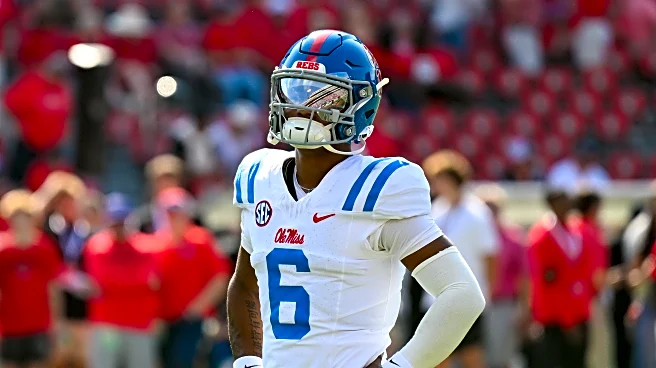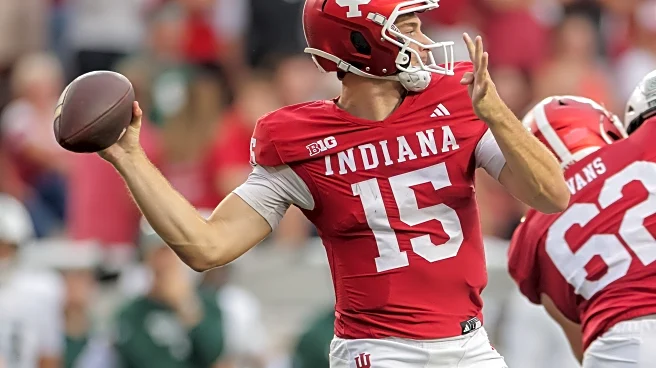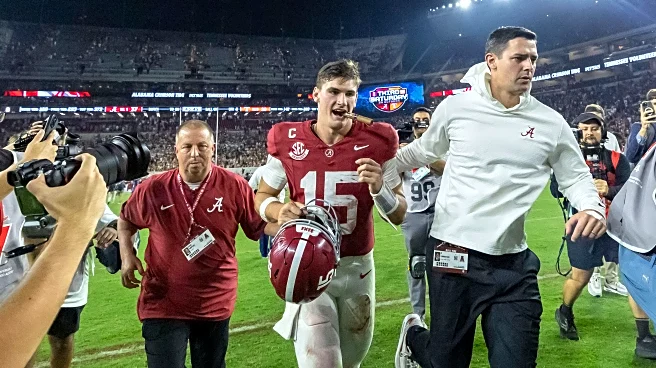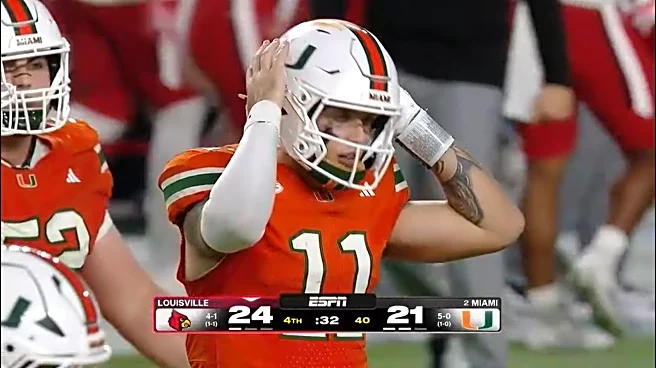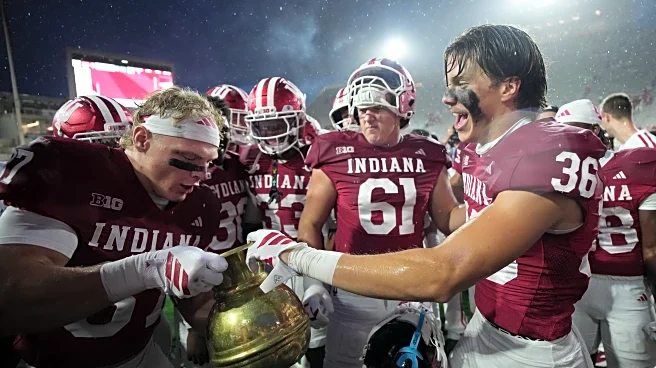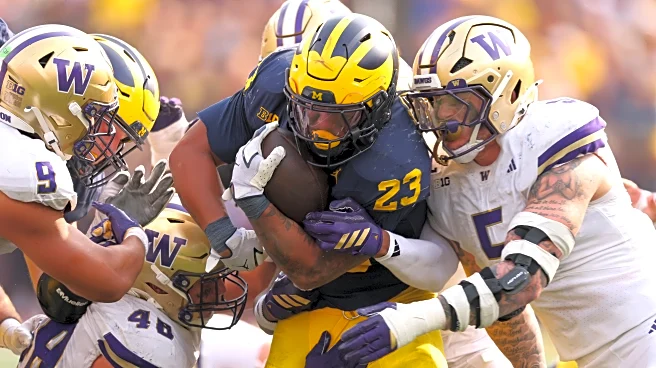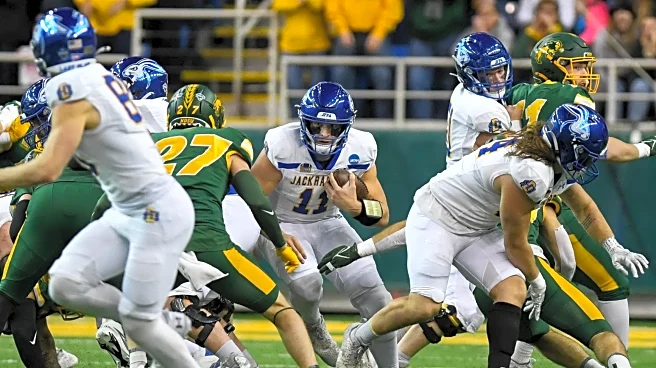What's Happening?
As the 2025 college football season progresses, ESPN reports that no clear front-runner has emerged in any conference, with 60 FBS schools having no more than one conference loss. The ACC is particularly
unpredictable, with Georgia Tech leading the standings despite inconsistent performances. The Big Ten sees Ohio State and Indiana as top contenders, while the Big 12 features eight teams projected to finish 8-4 or better. The SEC remains competitive with ten teams ranked in the AP Top 25, including Texas A&M, Alabama, and Georgia. The American Conference race for the Group of 5's CFP spot is also highlighted, with South Florida and Memphis as key players.
Why It's Important?
The lack of a clear leader in college football conferences signifies a highly competitive season, potentially affecting playoff selections and bowl game placements. This unpredictability can lead to increased fan engagement and viewership as teams vie for conference titles. Schools like Georgia Tech and Indiana, traditionally not seen as powerhouses, have opportunities to make significant impacts, potentially altering recruiting dynamics and financial investments in their programs. The competitive nature of the SEC and Big 12 could influence future scheduling and conference realignments.
What's Next?
As the season progresses, teams will continue to battle for conference supremacy, with key matchups potentially determining playoff berths. The upcoming games, such as Texas A&M vs. LSU and UCLA vs. Indiana, will be crucial in shaping the playoff picture. The American Conference's race for a CFP berth will likely intensify, with Memphis playing a pivotal role. Stakeholders, including coaches and athletic directors, will need to strategize effectively to navigate the competitive landscape and secure favorable outcomes.
Beyond the Headlines
The chaotic nature of the 2025 season could lead to discussions about the effectiveness of current playoff selection processes and the potential need for expansion. The rise of unexpected contenders may prompt a reevaluation of recruiting strategies and resource allocation within college football programs. Additionally, the increased competitiveness might influence media coverage and sponsorship deals, as networks and brands seek to capitalize on the heightened interest in college football.




